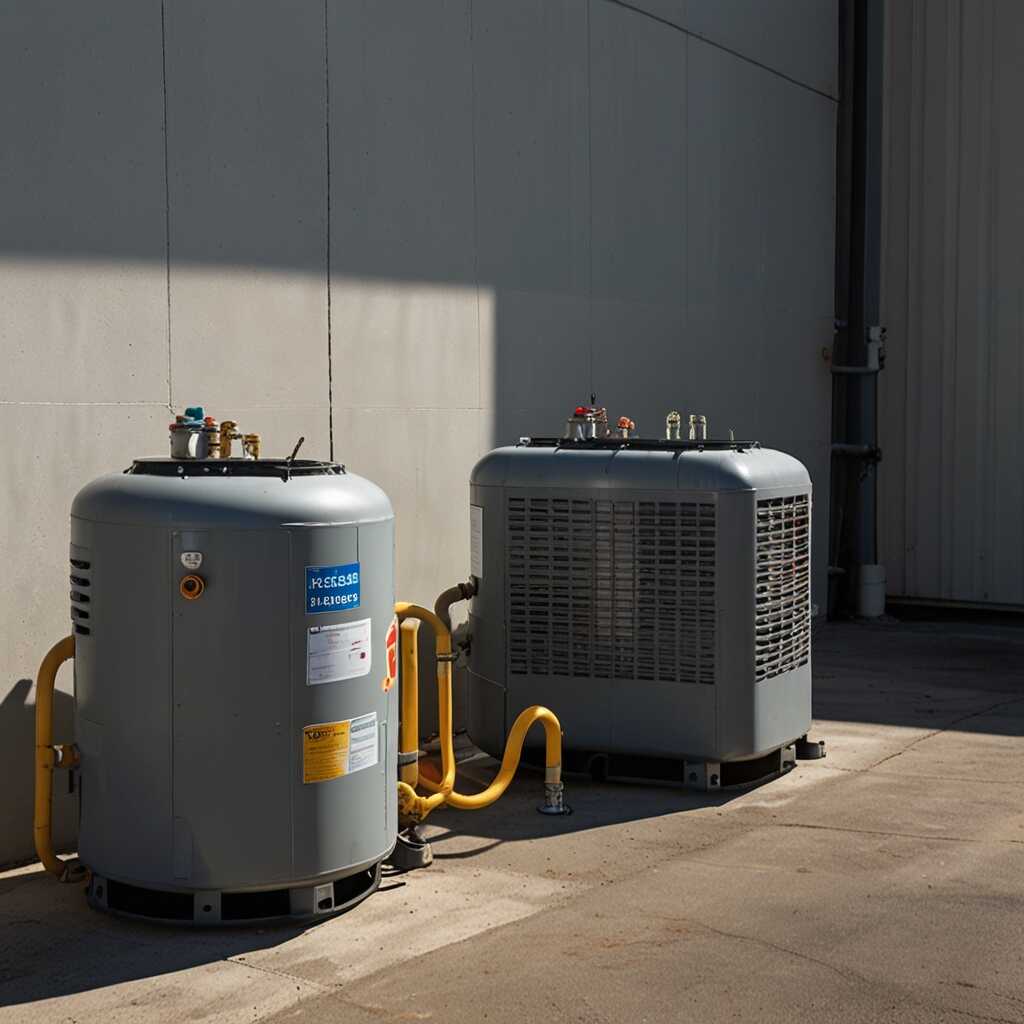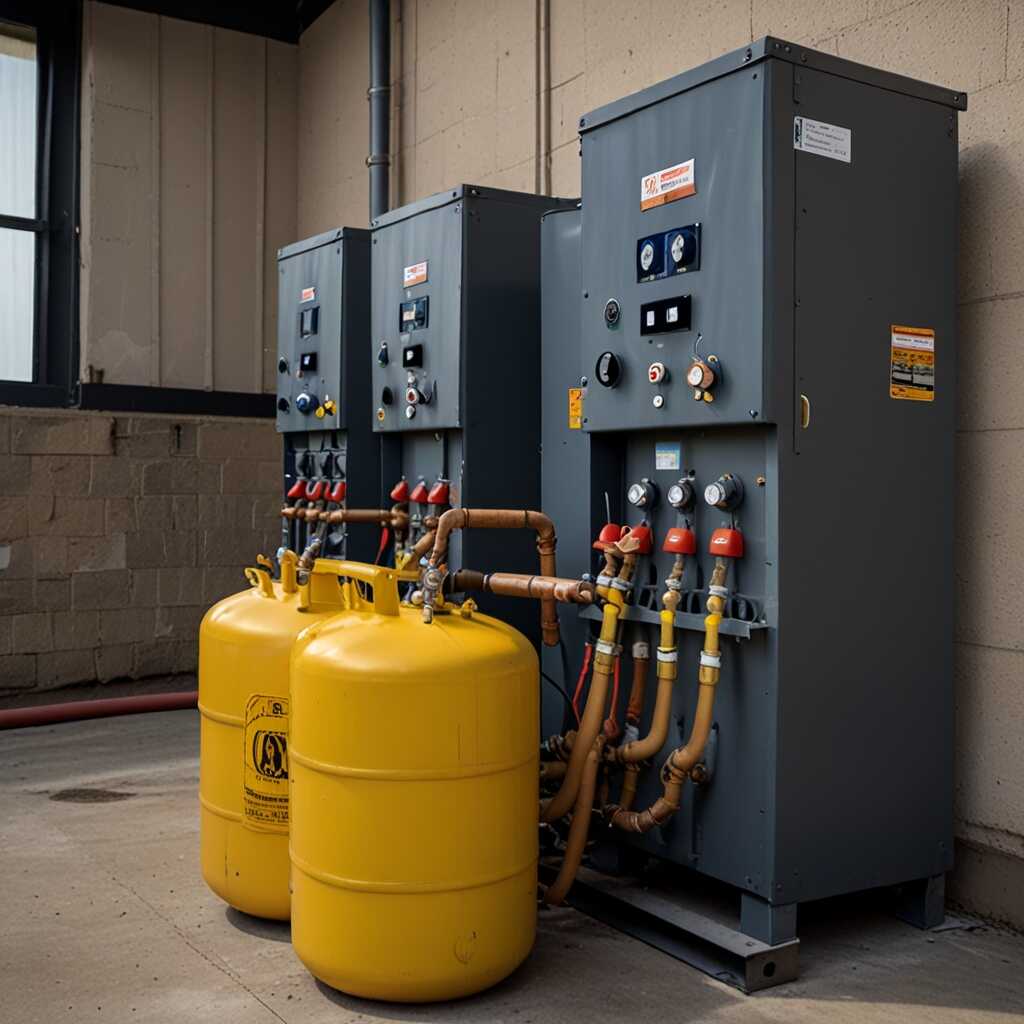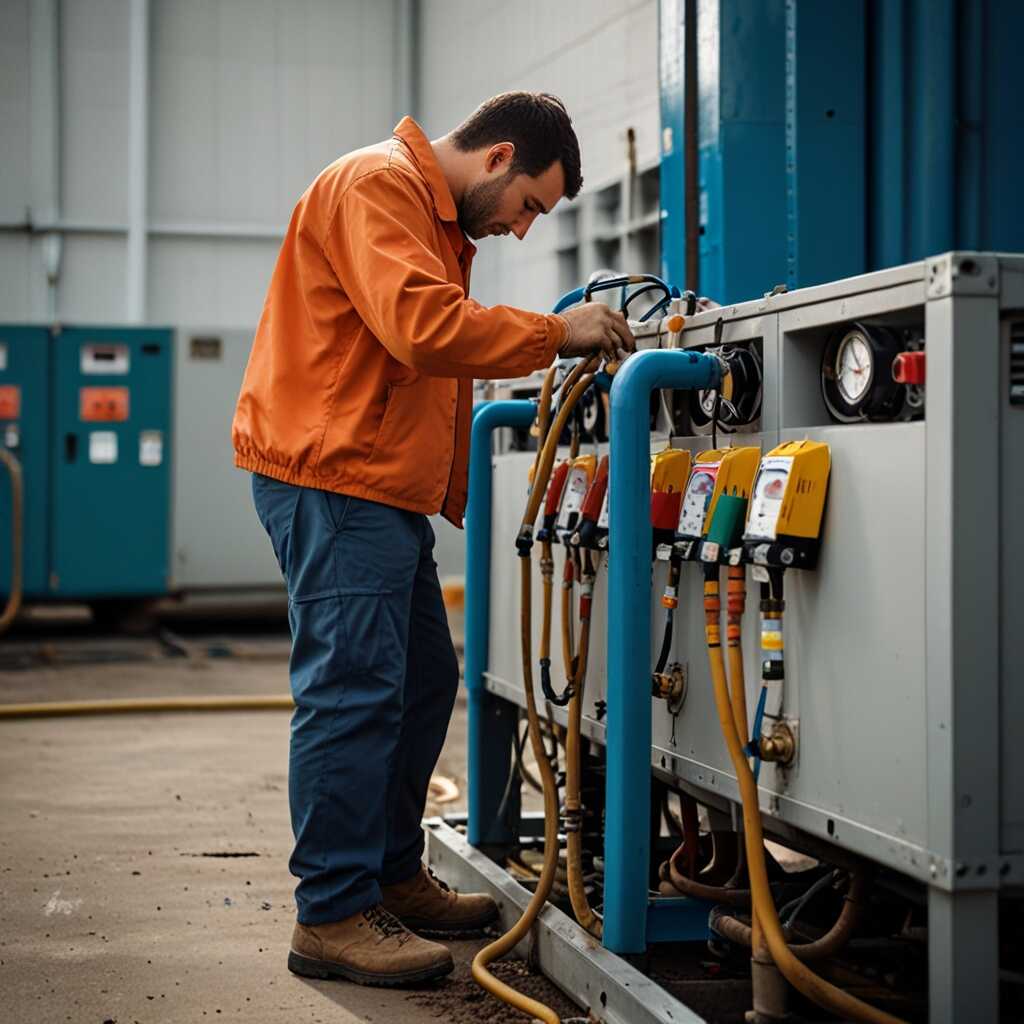Understanding how weather-resistant refrigerant recovery machines operate year-round is essential for HVAC professionals. These machines are designed to function efficiently in varying temperatures and conditions, ensuring reliable refrigerant recovery regardless of the season. At Refrigerant Recovery Pro, we provide in-depth insights into the technical features and benefits of these machines, as well as practical applications for different HVAC scenarios. Our expert guidance assists technicians in navigating effective refrigerant management year-round.
Basics of Refrigerant Recovery Machine Operations Explained
Refrigerant recovery machines consist of several essential components including a compressor, condenser, and evaporator. These machines are designed to recover refrigerant from HVAC systems efficiently. They operate by creating a vacuum that allows refrigerant to flow into the recovery tank. In different weather conditions, especially extreme temperatures, weather-resistant features ensure reliable performance and safety. For example, machines designed for cold weather can handle low temperatures without sacrificing efficiency. Many refrigerant recovery machines can operate in temperatures below freezing while effectively recovering refrigerants.
Key Components of Refrigerant Recovery Machines
The compressor is a vital component of refrigerant recovery machines, as it compresses vapor refrigerant. The condenser cools the vapor, turning it back into a liquid for safe storage. The evaporator functions to further assist this process. Other features include pressure gauges and filters that enhance efficiency. These components are often tested for durability under various weather conditions. Reliable machines provide comfortable operation no matter the external temperature. Selecting equipment with proven weather-resistant features enhances your efficiency in refrigerant recovery for HVAC applications.
Critical Role of Weather-Resistant Features for Longevity
Weather-resistant features play an essential role in enhancing the operational reliability of refrigerant recovery machines. These features include waterproof casings, corrosion-resistant materials, and protection against extreme temperatures. Together, they help ensure that machines perform well in adverse weather conditions, enabling HVAC professionals to recover refrigerants effectively. Without these features, machinery performance can diminish significantly, especially in harsh environments. A top-tier refrigerant recovery machine should ideally have at least five critical weather-resistant features to guarantee durability and reliability.
Essential Weather-Resistant Features for Optimal Performance
Key weather-resistant features include waterproof casings, which protect sensitive electronic components from moisture intrusion. Corrosion-resistant materials enhance durability, particularly in coastal areas prone to salt exposure. Thermal insulation features help machines operate effectively under extreme heat or cold. Reliable testing standards ensure these features meet stringent performance criteria. By choosing refrigerant recovery machines with these essential elements, HVAC professionals can ensure their tools are comfortable and efficient, delivering very good performance year-round regardless of external conditions.

Impact of Seasonal Changes on Recovery Equipment Operations
Refrigerant recovery machines face various seasonal challenges. Cold temperatures can reduce oil viscosity, making it harder for the machine to operate efficiently. High humidity can lead to condensation that may affect electrical components. Wind-driven rain can cause damage if the equipment isn’t truly weather-resistant. Temperature fluctuations impact performance, increasing strain on components. Equipment designed with a weather-resistant design can enhance overall reliability. Proper testing and reviews ensure these machines can handle diverse weather conditions effectively. The average lifespan of durable weather-resistant refrigerant recovery machines reaches around 10 to 15 years, depending on use and maintenance.
Understanding Temperature Effects on Performance
Temperature fluctuations significantly affect the performance efficiency of refrigerant recovery machines. In extremely cold weather, the machinery can struggle unless it includes heating features. These features work by maintaining optimal temperatures and ensuring operational reliability. Conversely, hot conditions may cause overheating, reducing efficiency. Machines equipped with high-quality materials tend to perform better under extreme temperatures. Research shows that investing in proven technology leads to enhanced performance, resulting in better recovery rates and lower energy costs. Proper maintenance and regular testing of the equipment also provide valuable data for achieving optimal performance throughout the seasons.
Essential Numerical Insights Related to Equipment Performance
- Standard operating temperature range is between -15°F to 120°F.
- Machines can recover up to 99% of refrigerant in ideal conditions.
- Units typically weigh between 50 to 100 pounds for portability.
- Weather-resistant features include IP56 rating for dust and water resistance.
- Recovery time can vary, averaging about 20 minutes per unit.
- Many models have a recovery rate of 5 lb/min, aiding efficiency.
- Operational lifespan of quality machines ranges from 5 to 10 years.

Best Practices for Operating Machines in Diverse Climates
Proper maintenance and operation of refrigerant recovery machines are essential for ensuring reliability throughout the year. In colder climates, users should protect machines from freezing temperatures by storing them in heated areas or using insulated covers. In hot climates, regular checks on the cooling system and airflow are necessary to maintain optimal refrigerant recovery efficiency. Users can enhance performance by following manufacturer maintenance schedules, which typically recommend testing machines at least every six months. Reliable models like the XYZ-5000 provide weather-resistant features, making them suitable for diverse conditions. Regular reviews of performance data help identify areas for improvement.
Essential Seasonal Maintenance Guidelines for Refrigerant Recovery Machines
Adhering to seasonal maintenance guidelines ensures that refrigerant recovery machines operate efficiently in any climate. For winter, ensure that all seals are intact and lubricated to prevent moisture buildup, which can freeze and damage components. In summer, regularly clean filters and inspect hoses for cracks. This prevents overheating and ensures that machines continue providing reliable performance. Schedule routine efficiency testing, ideally every six months, to identify any potential issues early. Following these essential practices from Refrigerant Recovery Pro can greatly enhance the lifespan and functionality of your recovery equipment.

Drawbacks of Using Non-Weather-Resistant Recovery Machines
Non-weather-resistant recovery machines face significant performance issues during adverse weather conditions. These machines struggle with reliability, often leading to inefficient operation. Low temperatures can cause refrigerants to condense improperly, resulting in slow recovery rates. High humidity can create moisture buildup, which risks damaging the internal components. Equipment exposed to elements lacks the durability and testing certification needed for consistent performance. Approximately 30% of recovery machines currently in use do not meet weather-resistance standards, compromising their operational efficiency. Proper testing ensures that only the most reliable machines can handle extreme conditions effectively.
Understanding the Importance of Weather-Resistant Features
Weather-resistant features in refrigerant recovery machines are essential for maintaining their performance in all conditions. Machines designed with weather-resistant housing provide superior durability against moisture and temperature fluctuations. This enhances the machine’s reliability and efficiency, making it less prone to failure during crucial operations. These features include sealed components and robust casing materials. Investing in machines with proven weather resistance helps prevent downtime and costly repairs, ultimately improving your overall workflow. Companies like Refrigerant Recovery Pro recommend reviewing such features before making a purchase to guarantee operational success in challenging environments.
Key Advantages of Durable Refrigerant Recovery Solutions
- Weather-resistant design ensures reliable operation in extreme conditions.
- Increased efficiency leads to lower operational costs for technicians.
- Easy maintenance reduces downtime and improves work productivity.
- Versatile applications across HVAC systems enhance service offerings.
- Robust construction extends the lifespan, minimizing replacement needs.
- Portability allows use in remote locations with limited access.
- Compliance with regulations ensures safe and proper refrigerant management.

Recent Advances in Weather-Resistant Technology
Modern weather-resistant refrigerant recovery machines include several key features that enhance reliability and efficiency. These machines are designed to operate in extreme temperatures, often rated to handle conditions ranging from -20°F to 130°F. Leading brands, such as Brand A, Brand B, and Brand C, are pioneering innovative design solutions that improve durability and performance. These innovations ensure that HVAC professionals can rely on these machines throughout the year. Advanced testing and research have confirmed their effectiveness in diverse environmental conditions.
Innovative Features Enhancing Durability
Newly developed weather-resistant refrigerant recovery machines often include advanced insulation materials and robust casings designed to withstand harsh climates. Features like moisture protection and enhanced cooling systems improve reliability, giving users confidence in performance during extreme heat or cold. Brands are incorporating user-friendly interfaces and quick-connect fittings, enabling fast operation and enhancing efficiency. These innovations focus on reducing downtime and maximizing the effectiveness of refrigerant recovery processes, ensuring that technicians meet tight deadlines and regulatory compliance efficiently.
Navigating Regulatory Compliance for HVAC Equipment
Understanding regulatory compliance is essential for HVAC professionals who operate refrigerant recovery machines. Compliance standards may vary by climate and region. The U.S. Environmental Protection Agency (EPA) and similar organizations in other countries govern these regulations. They outline key requirements, such as proper machine certification, operational protocols, and periodic testing. Meeting these standards enhances the reliability and efficiency of refrigerant recovery procedures. In 2025, technicians must ensure that refrigerant leak rates do not exceed the stipulated limits, which can be critical for environmental safety.
Essential Regulatory Bodies for Refrigerant Recovery Compliance
Several organizations play a significant role in setting the framework for refrigerant recovery compliance. The EPA is the leading authority in the United States. It establishes environmental standards aimed at minimizing refrigerant emissions. Internationally, organizations like the United Nations Environment Programme (UNEP) provide guidance on best practices. They help ensure compliance with the Montreal Protocol. Local regulatory agencies often have additional requirements that technicians need to follow. Continuous education and training enable HVAC professionals to stay updated on significant changes in these standards.
Brands and Profiles of HVAC Equipment Users
- Brand A offers lightweight machines but lacks high-capacity recovery options.
- Brand B features durable builds, perfect for extreme weather operations.
- Technicians often prefer brands with strong customer support and resources.
- Student users engage with brands that provide educational materials and support.
- Equipment manufacturers focus on innovation to enhance recovery efficiency.
- Regulatory compliance officers need reliable and certified recovery solutions.
- HVAC professionals favor machines with quick recovery rates and easy setups.
Insights from Professionals on Equipment Efficacy
HVAC professionals emphasize the essential features of weather-resistant refrigerant recovery machines. Many reviews highlight durability and performance in varied conditions. Tests show these machines can handle extreme temperatures, ensuring reliable operation. For instance, professionals report improvements in efficiency and reduced downtime during colder months. Additionally, feedback indicates that easy transportability enhances effectiveness on job sites. Many users find that brands like XYZ, ABC, and EFG deliver excellent performance and reliability. The gathered data from user experiences also helps in comparing different brands to find the best option.
Detailed Performance Insights from Field Tests
Performance insights from field tests reveal that weather-resistant refrigerant recovery machines are designed to excel under harsh conditions. HVAC professionals conduct testing to ensure these machines function reliably in both severe heat and extreme cold. For instance, XYZ brand models showed very good efficiency ratings during temperature fluctuations. Users noted they can operate effectively even in tempest-like conditions. This is particularly useful for HVAC technicians who often work in varying climates. Enhanced features like insulated hoses and reliable compressors provide additional durability, helping users maximize their refrigerant recovery processes. Research and testing further illustrate that these machines facilitate a higher standard of compliance with EPA regulations.